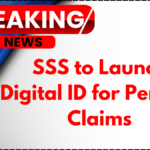The highly anticipated Pi Network launch 2025 is officially underway, marking a new era for digital currency adoption in the Philippines. This isn’t just a global event; it has specific, real-world implications for everyday Filipinos. The project, which originated from Stanford graduates, is now moving into its Open Mainnet phase, allowing users to transfer Pi freely and explore decentralized apps (dApps) using the Pi ecosystem.
The launch means that Pi, once mined passively on mobile phones, is transitioning into a usable cryptocurrency. For millions of Filipino Pioneers who joined early, this is a crucial turning point. Now, users will need to complete KYC (Know Your Customer) verification to migrate mined Pi into the Open Mainnet and start participating in the actual Pi economy.

Why the Pi Network Launch Matters in the Philippines
The Philippines has been one of the most active communities supporting Pi Network since its early beta days. The mobile-first model resonated well with Filipinos who often access financial tools via smartphones due to limited access to traditional banking.
With the Pi Network launch 2025, the country is seeing the emergence of local Pi-based marketplaces, physical merchant partnerships, and educational hubs aimed at spreading blockchain literacy. The growing ecosystem provides not just speculation, but utility—from paying for food, services, and even tuition using Pi.
Filipino developers and entrepreneurs are already experimenting with Pi-powered platforms, adding practical value to what was once just a mining app. The launch is creating income opportunities for users who may not have had access to financial systems before.
What Filipinos Need to Do Now to Prepare
June 2025 is a pivotal month. If you’re a Pi user in the Philippines, here’s what you need to focus on:
- Complete KYC: Without KYC, your mined Pi will remain stuck in limbo.
- Migrate to Mainnet: Use the Pi browser and follow in-app instructions to transition your balance.
- Explore Pi Apps: Test and use decentralized applications that run within the Pi ecosystem.
- Connect with Local Communities: Look for Pi hubs or groups in your area. Many meetups are now helping users through migration and usage.
Here’s a quick reference for next steps:
| Action | Description | Deadline |
|---|---|---|
| Complete KYC | Verify identity via in-app prompt | ASAP |
| Transfer to Mainnet | Move balance to Mainnet wallet | June 30, 2025 |
| Start Using Pi Apps | Try Pi utilities and games | Ongoing |
| Join Pi Communities | Attend meetups or seminars | Weekly Events |
What the Pi Economy Looks Like in June 2025
Post-launch, the value of Pi remains unofficial but is slowly being shaped by community marketplaces. While there’s no exchange listing yet, peer-to-peer trading within Pi apps is thriving. In the Philippines, some local vendors are now accepting Pi as payment for groceries, gadgets, and small business services.
Pi’s real strength is in enabling micro-transactions with zero gas fees. For countries like the Philippines, where remittance and small payments are daily concerns, this could be transformative.
Also, with more Pi-based job marketplaces and freelance platforms emerging, skilled Filipinos can earn in Pi rather than traditional fiat, lowering transaction costs and bypassing international banking hurdles.
Potential Challenges for Filipino Users
While the outlook is optimistic, it’s not without its hurdles:
- KYC bottlenecks: Some users still face delays due to document issues.
- Merchant adoption: Not all businesses understand how to integrate Pi yet.
- Scams and misinformation: As with any crypto launch, caution is essential.
To mitigate these, the Pi Core Team has partnered with community moderators and local leaders to push educational content and FAQs directly within the app.
Conclusion
The Pi Network launch 2025 isn’t just a technical milestone; it’s a social and economic opportunity for the Philippines. For Filipinos, it opens the door to digital inclusion, decentralized finance, and real-world application of a cryptocurrency born on mobile phones. If you’ve been mining Pi, now is the time to act. Stay verified, stay connected, and stay informed—because what happens next will depend on the community’s ability to use, not just hold, their Pi.
FAQs About Pi Network Launch 2025
What is the Pi Network launch 2025?
The Pi Network launch 2025 marks the transition of the Pi cryptocurrency from its enclosed test phase to an open Mainnet, allowing users to freely use their Pi for transactions and apps.
Is Pi Network legal in the Philippines?
As of June 2025, Pi Network operates as a decentralized project and is not officially regulated, but there are no laws in the Philippines prohibiting its use or development.
How do I know if I passed KYC?
You’ll receive a notification in your Pi app if your KYC is approved. You can also check your status in the app’s KYC section.
Can I cash out Pi now?
Currently, Pi is not listed on external exchanges. However, you can use Pi in peer-to-peer transactions within the ecosystem.
Where can I spend Pi in the Philippines?
Several local businesses, online stores, and freelance platforms now accept Pi. Community-run directories and Pi browser apps provide updated lists.
For More Information Click Here



